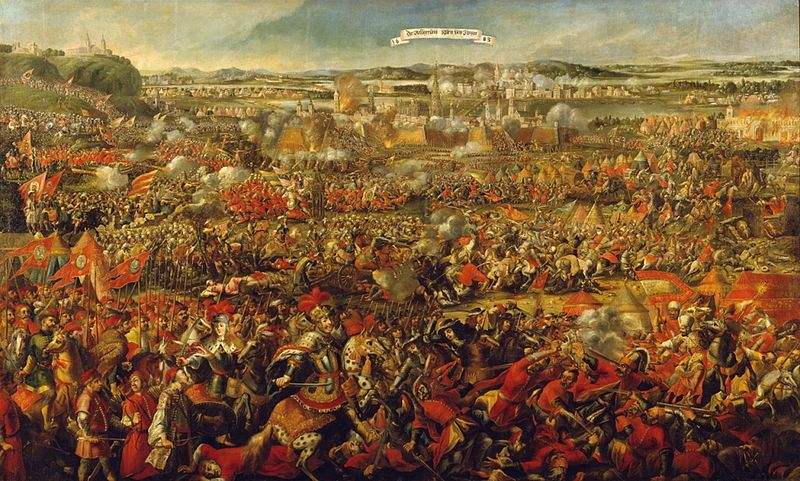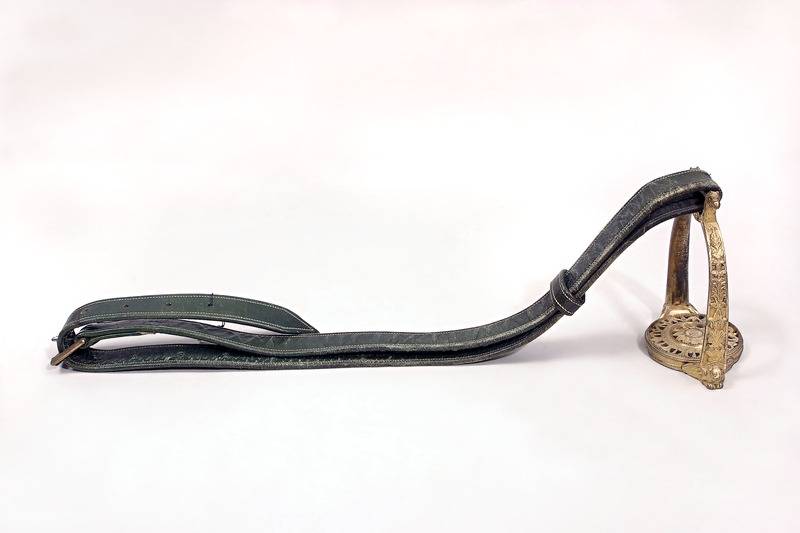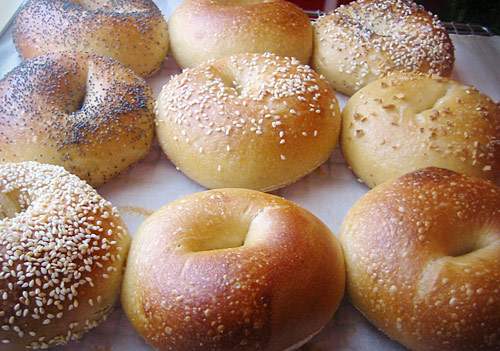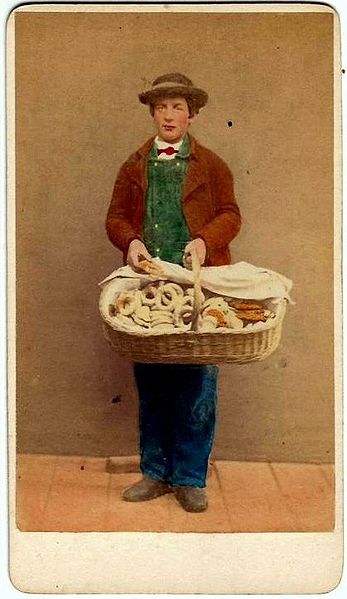 Several nations claim the bagel as their own, but none of the accounts on the origins of this tasty roll are as epic as the Polish.
Several nations claim the bagel as their own, but none of the accounts on the origins of this tasty roll are as epic as the Polish.
The Poles tell us that the bagel was invented by a grateful Jewish baker in a rescued and half-destroyed Vienna. He wanted to honor King John Sobieski of Poland and his crushing victory over the Turks outside the city walls. On September 12, 1683, at about 5pm, the Polish king and his 16-year old son charged down the slopes of the Kahlen Berg (bare hill) above Vienna at the head of 18,000 horsemen, 3,000 of which were the legendary “winged hussars.” It was the largest cavalry charge ever in history, and it completely routed Kara Mustapha and his Ottoman army.
We are told that this extremely popular “hole-in-a-roll” bread was called bügel by the Jewish baker because in German this word means stirrup. Being just bread it was a modest tribute to be sure, but three centuries and more have passed, and the bagel is now known and appreciated in much of the world.
Its making process differs though from most breads and includes three steps in its cooking that seem to symbolically at least perpetuate the torment and sufferings endured by the beleaguered capital of the Holy Roman Empire. Bagels are first broiled, then parboiled, and finally baked. The end result is a soft, smooth-crusted, tasty roll, one that appeals to the eye and that we never tire of.
Amidst the cruel persecutions of Catholics by Islamists worldwide, we should remember this Polish story when having a morning bagel and a cup of coffee, and then pray to the God of Battles, through the intercession of His Blessed Mother, that a new Sobieski be given Christendom–although in strict justice we do not deserve one, because of our slaughter of the innocents throughout the West in legalized procured abortion and many other great and collective sins.
BÜGEL
Ingredients
4 Cups all-purpose flour (530 g)
2 packages of active dry yeast (¼ oz each package)
1 ½ Cups warm water (355 ml) (110 degrees F/45 degrees C)
3 ½ Tablespoons white sugar (40 g)
1 ½ Tablespoon salt (20 g)
1 Tablespoon white sugar (10 g)
DIRECTIONS
1. In large bowl, combine 1-1/2 cups flour and yeast. Mix water, 3 tablespoons sugar and salt together, and add to the dry ingredients. Beat with a mixer for half a minute at a low speed, scraping the sides of the bowl clean. Beat at a higher speed for 3 minutes. Then, by hand, mix in enough flour to make a moderately stiff dough.
2. Turn out onto a lightly floured surface and knead until smooth and elastic (8-10 minutes). Cover, let rest for 15 minutes.
3. Cut into 12 portions, shape into smooth balls. Poke a hole in the center with your finger, and gently enlarge the hole while working the bagel into a uniform shape. Cover, let rise 20 minutes.
4. Meanwhile, start a gallon of water boiling. Put 1 tablespoon of sugar in it, mix it around a bit. Reduce to simmering.
5. When the bagels are ready, put 4 or 5 bagels into the water, and cook 7 minutes, turning once. Drain them. Place on a greased baking sheet, and bake at 375 degrees F (190 degrees C) for 30 to 35 minutes. Remove from oven, eat hot or cold.
6. Broiling option: For a glossier surface, place raised bagels on an ungreased baking sheet prior to boiling them. Broil them five inches from heat for 1 to 1-1/2 minutes on each side. Then put them into the hot water to be boiled as above. Note: do not bake broiled bagels as long as non-broiled ones, 25 minutes should be long enough.
Links of Interest
Turkish war tents turned into Mass vestments after 1683 victory in Vienna
Video – Sobieski at Vienna
Sobieski Comes to the Relief of Vienna
September 12 – The Holy Name of the Virgin Mary; in thanksgiving for the victory over the Turks at Vienna















